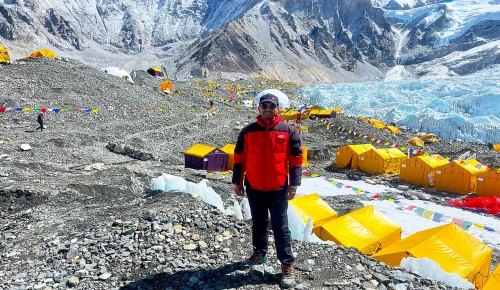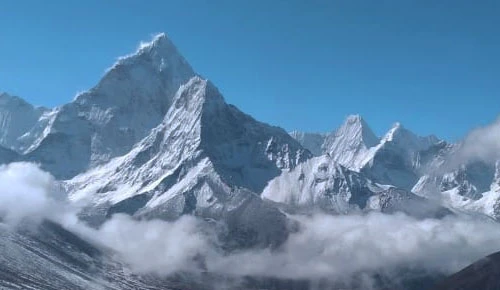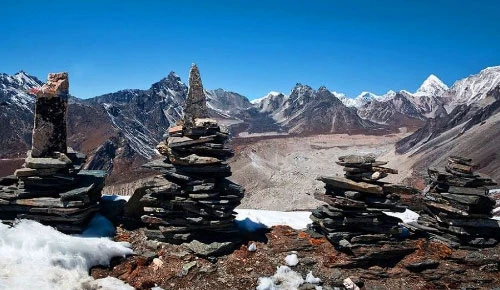Complete Packing List For Trekking in Langtang Region
Langtang Region is 61.8 km from Kathmandu's capital, which has excellent beauty and social and cultural uniqueness. The Langtang Trek takes you to a valley of lakes brimming with exquisite natural beauty.
This region offers mostly moderate treks where you can dive into the pristine nature of the Langtang region in around a week. So, you do not necessarily have to be an experienced trekker to trek into this region. With appropriate backpacks, physical strength, and mental preparedness, even a novice trekker can opt for this trek.
On this trip, you start from Syabrubeshi after a rough ride from Kathmandu. On walking through the few rough pathways, uphills, and downhills, you will rise to Kyanjin Gompa, the last destination of the trip. This point offers the most astounding views of the chain of Himalayas in the Langtang district.

Autumn and spring are among the pinnacle seasons to travel into the valley. During these seasons, the weather conditions are moderate with stable climatic circumstances. You will get to catch dynamite views of the landscapes you are trekking in the spring season and walk through the core of rhododendron blooms.
You can also do solo trekking in the area with appropriate preparation and planning. If you have an expert guide and all the necessary vital supplies you require on the journey, then trekking solo is no issue.
Table of Contents
Importance of Packing Light
The Langtang region offers stunning views of nature along with cultural reflection; however, the journey to this region passes through rough terrain so packing properly is important. Here are the reasons why its important to pack proper gear during the trek.
Mobility and Comfort
Reducing the weight of one's pack can greatly enhance the pleasure and convenience of trekking. By lightening the load, one's ability to move freely along the trail is greatly increased. Eliminating unnecessary items helps to lessen the strain on the body, leading to decreased fatigue. Consequently, hikers can fully engage in their adventure, appreciating the natural beauty around them without the hindrance of heavy gear.
Reduce Fatigue
Overloading has the potential to quickly turn an exciting hike into a tiring endeavour. The heavyweight not only strains the body but also drains energy reserves, leading to fatigue and discomfort. However, by embracing a minimalist approach to packing, hikers can reduce this pressure and conserve valuable energy. With a lighter load, each step becomes easier, enabling hikers to cover longer distances effortlessly and fully enjoy the journey.
Efficiency and Speed
Traveling with a lighter backpack is like getting rid of extra weight, enabling hikers to travel more efficiently and quickly on the path. This advantage becomes even more important in difficult terrain or bad weather conditions. With a lighter load, each step becomes easier, making progress faster. Whether climbing steep slopes, rocky paths, or facing harsh weather, trekkers with lighter backpacks can keep moving forward and reach their destinations faster, improving their overall hiking experience.
Less Strain on Joints and Muscles
Carrying too much weight during a trek can be tough on both the mind and body, especially on the joints and muscles. This can lead to a higher chance of injury and discomfort, which may affect the overall trekking experience. However, opting for a lighter pack can help reduce this risk. With a lighter load, there is less strain on the joints and muscles, decreasing the likelihood of overexertion and injury. This allows trekkers to move more comfortably and easily, enabling them to fully appreciate the journey without worrying about physical limitations.
Adaptability
Having a lighter pack is essential when facing uncertain conditions and unexpected obstacles on the trail. The decreased weight allows for greater adaptability and agility, enabling hikers to effectively respond to changing weather or unforeseen challenges. Whether it's a sudden rainstorm, a steep climb, or a detour caused by trail conditions, hikers with lighter packs can easily adjust without being burdened by unnecessary gear. This flexibility empowers them to confidently navigate the trail, knowing they have the freedom to handle any challenges that may come their way during the journey.
Packing List for Langtang Region Trekking
While packing, you must be very careful not to overpack. It is always a wise decision to pack light and to pack wise. Although you may hire a porter to carry your luggage, adding extra luggage or the burden is not a good idea. Thus, before you pack, you should be familiar with the climate and temperature of the time you are trekking. And then you can plan accordingly.
Clothing:
- Lightweight, moisture-wicking base layers (long-sleeve shirts, pants)
- Insulating layers (fleece jacket, down jacket)
- Waterproof and windproof jackets and pants
- Trekking pants (convertible pants are versatile)
- Warm hats and gloves
- Hiking socks (wool or synthetic blend)
- Undergarments
- Sun hat or cap
Gears:
- Backpack (comfortable, preferably with hip belt)
- Sleeping bag (rated for the expected temperature)
- Trekking poles (helpful for stability)
- Headlamp or flashlight with extra batteries
- Sunglasses with UV protection
- Water bottles or hydration systems (consider purification tablets or filters)
- Personal first aid kit (including blister treatment, pain relievers, and any personal medications)
- Trekking map, compass or GPS device
- Lightweight towel
- Multi-tool or knife
- Trekking umbrella
- Plastic bags or dry sacks for waterproofing gear
Footwear:
- Hiking boots with good ankle support
- Camp shoes or sandals for resting at lodges
Personal Hygiene:
- Hand sanitiser
- Toothbrush and toothpaste
- Biodegradable soap
- Toilet paper
- Wet wipes or baby wipes
- Sunscreen and lip balm with SPF
- Personal hygiene items
Miscellaneous:
- Lightweight camera or smartphone for capturing memories
- Portable charger or solar charger for electronic devices
- Notebook and pen
- Snacks (energy bars, nuts, dried fruits)
- Cash (Nepalese Rupees) for purchasing items along the trek and tipping guides and porters
- Travel insurance documents and emergency contacts
- Passport and permits (Langtang National Park entry permit)
- Lightweight daypacks for shorter excursions from lodges
- Duct tape (for quick repairs)
Tips while packing for The Trek
- Buy a comfortable backpack for the trek
- Pack according to the season of the trek
- Always carry enough hygiene products
- Carry clothes that are quickly drying
- Always wear clothes in layers
- Avoid unnecessary items
- You should pack your waste in a separate plastic bag
- Get comfortable with the trekking shoes before the trek.
- Rent sleeping bags, a down jacket, and other trekking gear
Conclusion
It is always what you pack inside a trekking bag that determines your travel experiences. If you are up at a high altitude but lack necessities, you will have terrible trekking memories. Thus, before you pack for your trip, you should be mindful of the geology, temperature, and atmospheric conditions of the spot you are trekking to.
Moreover, the Langtang region promises an unforgettable journey through stunning landscapes and a rich cultural heritage. To make the most of this experience, it is crucial to pack wisely. Finding the perfect balance between carrying necessary equipment and keeping weight to a minimum is key.
Trekkers can fully appreciate the beauty of the Langtang region without feeling constrained by unnecessary items by concentrating on staying light, reducing fatigue, and increasing flexibility. As you set off on this exciting adventure, keep in mind that a well-prepared backpack is essential for a memorable trekking experience, allowing you to navigate the challenging terrain effortlessly and embrace the marvels that await in the heart of the Himalayas.
From the above blog, you will have proper knowledge about the importance of packing and the things you need to pack during the treks. The region offers a variety of trekking packages and having information on packing can help make the trips easy and smooth. Here is the list of various Langtang packages:
- Langtang Valley Trek
- Tamang Heritage Trail and Langtang Valley Trek
- Langtang Short Trek
- Langtang Trek with Heli Return
- Helambu Trek - 5 Days
- Langtang Valley Luxury Trek - 8 Days
- Langtang and Gosaikunda Pass
- Gosaikunda Lake Trekking
If you're looking to experience Langtang Trek or anywhere in Nepal, feel free to visit our website, Nepal Trek Adventures and Expedition. We offer a wide range of packages to choose from. Alternatively, you can reach out to us on WhatsApp at +977-9851017030. We'll be more than happy to assist you in planning and completing your tour.








